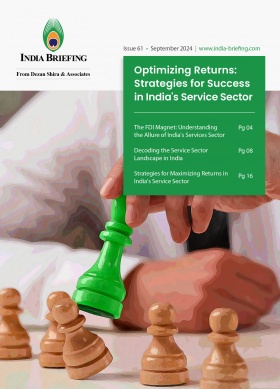India’s PAN 2.0 Project: All You Need to Know
India’s union cabinet has approved the PAN 2.0 project, an upgrade to the current Permanent Account Number (PAN) system, which aims to digitally enhance taxpayer services and simplify business processes.
On November 26, 2024, the Cabinet Committee on Economic Affairs (CCEA) approved the Income Tax Department’s Permanent Account Number (PAN) 2.0 project. The upgrade includes the addition of a QR code to PAN cards, which will be provided free of charge to taxpayers.
According to the central government, the primary goal of this project is to modernize and simplify the issuance and management of PAN and TAN (Tax Deduction and Collection Account Number), making the process more user-friendly and efficient. With an existing database of 780 million PANs and 7.32 million TANs, the project aims to meet the needs of taxpayers in India by consolidating multiple platforms and providing more effective services to PAN and TAN holders.
What is the PAN 2.0 project?
PAN 2.0 is an e-governance initiative aimed at modernizing the Indian taxpayer registration system through technology-driven improvements.
Currently, PAN-related services in India are distributed across three separate platforms:
- e-Filing Portal
- UTIITSL Portal
- Protean e-Gov Portal
The PAN 2.0 Project will merge these services into a single, unified portal. This centralized platform will comprehensively manage all PAN and TAN related activities, including applications, updates, corrections, Aadhaar-PAN linking, re-issuance requests, and online PAN validation. By doing so, the country’s Income Tax Department seeks to simplify tax-related procedures, reduce delays, and enhance the mechanisms for addressing grievances.
The announcement also says that the project seeks to establish PAN as a universal identifier for various digital systems used by designated government agencies across India.
Key features of PAN 2.0
- Unified portal: A single platform for all PAN and TAN services, making access easier for users.
- Eco-friendly processes: Implementation of paperless procedures to minimize paperwork.
- Free issuance and faster processing: PAN cards will be issued at no cost with reduced processing times.
- Enhanced security: Personal and demographic information will be safeguarded through improved security measures, including a PAN Data Vault.
- Support services: A dedicated call center and help desk will be available to handle user inquiries and issues.
Frequently asked questions
Q1. Do I need a new PAN under PAN 2.0?
Answer: No, existing PAN cards remain valid. You don’t need to apply for a new one unless you want updates or corrections.
Q2. Can I update PAN details like name or address?
Answer: Yes, after PAN 2.0 launches, you can update details like name, address, or email for free. Until then, updates can be made through Aadhaar-based online services or the current process (physical centers or online applications).
Q3. Will my PAN card change under PAN 2.0?
Answer: Not unless you request updates or corrections. Your existing PAN card will remain valid.
Q4. What about old PAN cards without QR codes?
Answer: QR codes have been included in PAN cards since 2017-18. Older cards without QR codes will still work. However, you can request a new card with an updated QR code to enable quicker validation of PAN details.
Q5. What does a QR Code do?
Answer: It verifies PAN details like photo, signature, name, and date of birth using a QR reader.
Q6. How will address updates work for PAN delivery?
Answer: If you want to update your address, you can do so for free via Aadhaar-based services. No new card will be delivered unless you request it after updating your details.
Q7. What is a “common business identifier”?
Answer: For businesses, the PAN will serve as a universal identifier across government digital systems, as announced in the Union Budget 2023.
Q8. Does the common identifier replace PAN?
Answer: No, PAN will continue to serve as the Common Business Identifier.
Q9. What is the “unified portal”?
Answer: It’s a single platform for all PAN/TAN services, simplifying applications, updates, and grievance redressal. It will eliminate delays caused by multiple systems.
Q10. What happens if someone has multiple PANs?
Answer: Holding more than one PAN is illegal in India. The revamped system under PAN 2.0 will detect and resolve duplicate PANs more efficiently. Users must report additional PANs to their assessing officer to deactivate them.
How India’s PAN 2.0 project will impact businesses
India’s PAN 2.0 project also aims to streamline tax processes as well as simplify and enhance how businesses operate within the regulatory framework.
1. Unified identification across platforms: One advantage of PAN 2.0 is its role as a common business identifier. By consolidating PAN with other identifiers used across government agencies, businesses will no longer need to maintain multiple IDs for compliance and transactions. This simplification can lead to reduced administrative overhead, minimize errors arising from maintaining separate identifiers, and promote consistency in data used across platforms.
2. Simplified tax compliance: By consolidating PAN and TAN services into a unified system, businesses may find it easier to manage their tax-related responsibilities. PAN 2.0’s features like QR codes for easy verification and online PAN validation tools simplify tasks such as:
- Filing tax returns.
- Verifying vendor PANs to comply with withholding tax requirements.
- Linking PAN with GST and other regulatory systems.
Such enhancements reduce compliance risks and make tax reporting more straightforward.
3. Improved security and data integrity: PAN 2.0 has reportedly introduced advanced cybersecurity features, such as a PAN Data Vault, ensuring the protection of sensitive business information. Enhanced data security reduces the risk of fraud or identity theft, which is especially critical for businesses managing large volumes of transactions.
4. Better grievance redressal mechanisms: A centralized help desk and call center under PAN 2.0 will assist businesses with queries or issues related to PAN and TAN. This centralized system:
- Ensures faster resolution of complaints.
- Offers a single point of contact for all PAN-related concerns, avoiding the confusion caused by dealing with multiple agencies.
5. Strengthening anti-evasion measures: The integration of PAN as a common identifier for financial transactions and its linkages to other regulatory systems will strengthen India’s ability to detect and prevent tax evasion. For several businesses, this ensures level playing field by holding fraudulent entities accountable.
6. Support for international business transactions: PAN 2.0 is expected to enable businesses to handle international transactions more efficiently through the following measures:
- Simplified processes for obtaining PAN for non-resident entities.
- Unified systems reduce delays in obtaining and verifying PAN for cross-border operations.
- Better alignment with global digital systems, improving India’s ease of doing business ranking.
About Us
India Briefing is one of five regional publications under the Asia Briefing brand. It is supported by Dezan Shira & Associates, a pan-Asia, multi-disciplinary professional services firm that assists foreign investors throughout Asia, including through offices in Delhi, Mumbai, and Bengaluru in India. Readers may write to india@dezshira.com for support on doing business in India. For a complimentary subscription to India Briefing’s content products, please click here.
Dezan Shira & Associates also maintains offices or has alliance partners assisting foreign investors in China, Hong Kong SAR, Dubai (UAE), Indonesia, Singapore, Vietnam, Philippines, Malaysia, Thailand, Bangladesh, Italy, Germany, the United States, and Australia.
- Previous Article India-Russia Economic Partnership: Strengthening Ties Across Trade and Investment
- Next Article Key Considerations for Expatriates in India: Jobs, Location Costs, and Tax







